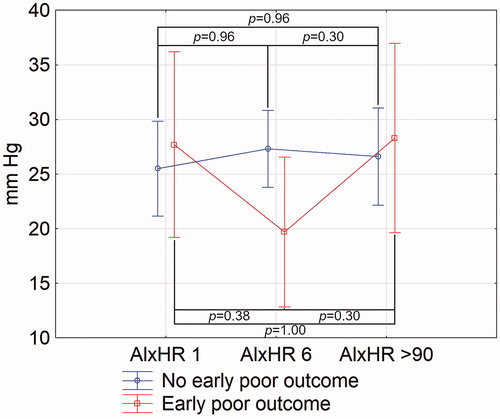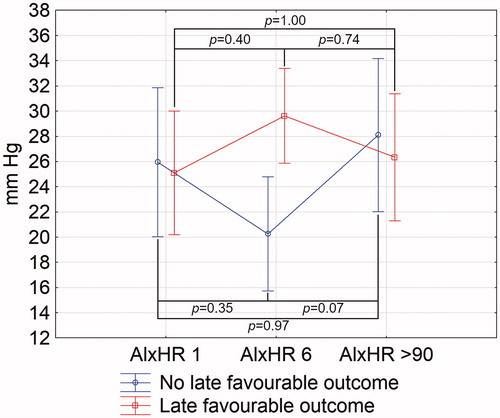Figures & data
Table 1. Baseline characteristics of the study population.
Table 2. Values of blood pressure, pulse wave velocity, and augmentation index normalised for heart rate on day 1, on day 6, and >90 days after stroke onset.
Figure 1. Changes of aortic augmentation index normalised for heart rate of 75 bpm in stroke patients with and without late favourable outcome. AIxHR: augmentation index normalised for heart rate of 75 bpm. Numbers following the parameter represent the day of its assessment. Vertical bars represent 95% confidence intervals. Indicated p values are derived from Tukey’s post hoc test.

Figure 2. Changes of aortic augmentation index normalised for heart rate of 75 bpm in stroke patients with and without early poor outcome. AIxHR: augmentation index normalised for heart rate of 75 bpm. Numbers following the parameter represent the day of its assessment. Vertical bars represent 95% confidence intervals. Indicated p values are derived from Tukey’s post hoc test.

Figure 3. Changes of aortic augmentation index normalised for heart rate of 75 bpm in stroke patients with and without early favourable outcome (C). AIxHR: augmentation index normalised for heart rate of 75 bpm. Numbers following the parameter represent the day of its assessment. Vertical bars represent 95% confidence intervals. Indicated p values are derived from Tukey’s post hoc test.

